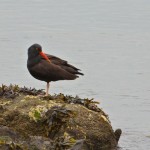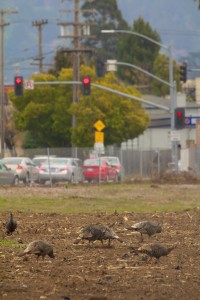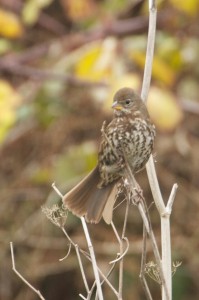Today I listened to a panel of Science Journalists at a COMPASS* science communication event. There is such a thing as bad science journalism, which has created some distrust and fear on the part of some scientists regarding how their research might be translated for the masses. The panel put together 4 accomplished journalists to hear their perspective and to learn advice for how to make sure interactions with science writers turn out as successful as possible.
The fine print: The following are from my notes and don’t represent everything that was covered. Also, I didn’t write down which journalist said what, so these statements may not represent the experience or opinion of individuals on the panel.Those panelists were:
Moderator: Nancy Baron, COMPASS
Journalists:
• Chris Joyce—National Public Radio
• Ken Weiss – Pulitzer Centre on Crisis Reporting
• Erica Gies – Independent Journalist
• Lauren Sommer – KQED/NPR
Some keys for communication with journalists:
- Be enthusiastic.
- Use short sentences and ditch the jargon.
- Provide the big picture/Context/Why it matters.
- Talk about how you got into it, why you are passionate about it.
A big message from the workshop was that researchers should be proactive in the process of getting their research out to journalists.
Even before contacting someone in the press, do some work ahead of time to be able to concisely discuss the context or rationale for the research, and to be able to do so in everyday language (no jargon). To me this sounds not too different from giving an elevator talk, which we should all be able to do anyway.
A contact email is more likely to succeed in tempting a journalist if it stands out. Make the email title catchy or provocative, not boring. Start with the problem or context before the research result. Provide hooks or links to other big stories (even outside of science).
It’s not just about the research. One thing (especially for radio/TV) is to see the discovery happening. Radio likes the sound of the environment, walking through the marsh. That can mean you shouldn’t wait until the paper is out- within reason- journalists don’t care as much about that, the peer-reviewed manuscript is only part of the story and usually not the most interesting part.
Don’t get too hung up on avoiding press because you are worried about scooping yourself with respect to journal embargoes. Obviously if you have research you think has a good shot for one of those top journals, be careful, but there are definitely ways to talk about your research without violating journal policy. Journalists should be willing to hold a story if an embargo does come into play. The opinion of the panel was that most writers would rather start on the story farther in advance anyway since they will have more time to get the story right. Also, on a hot paper, journalists know you will be fielding interviews from many news outlets, so they like to be able to get in before the crush.
How to help journalists get it right:
- Be patient! They are not experts in the field.
- If you don’t think they are asking the right questions, you can suggest to them what you think the right questions are.
- You can ask them to pause during an interview and recap to make sure they are getting the picture.
- A writer is more likely to agree to share a particular tricky part
- Analogies are great to help with complex topics.
- Provide names for other people they can talk with.
To deal with controversial topics, you can give them a heads up of people they will hear from with different view points, why they find your work problematic, and why you don’t think they are right.
For talking about uncertainty in science without killing the story, be prepared by determining limits of how far you are willing to go in terms of confidence in your conclusions. Journalists won’t publish a story if it is so filled with caveats there is no message or story. They would rather talk in bold confident terms (their editors even more so). If there is uncertainty, you can still talk about the stakes of knowing the answer, and why continuing to search for the answer is important. Don’t lead with your caveats.
Final message:
“Journalists are not your partners, but they can be your tools”
*Mark Schwartz says: COMPASS is the group that coordinates Science Communication for (among others) the Leopold Fellows, The Smith Fellows, The Wilburforce Fellows and Liber Ero fellows (i.e., ALL the major ecology/conservation fellows programs interested in fostering engaged science).



